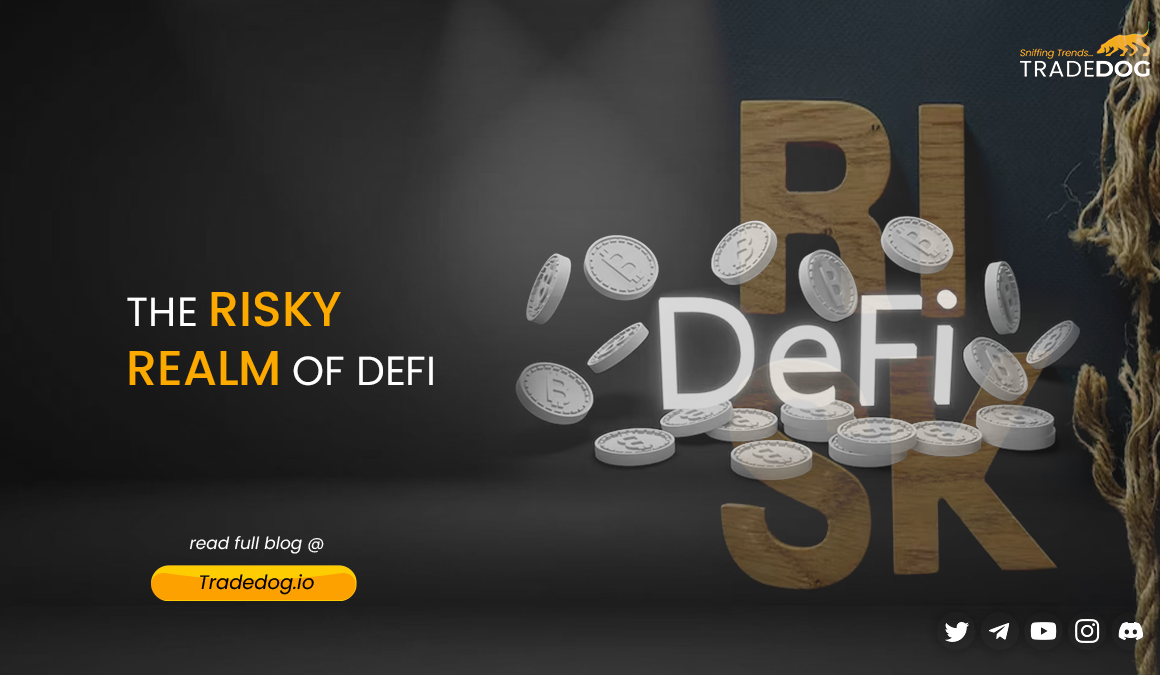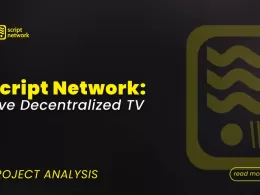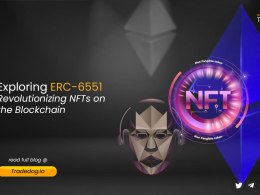Quick Links
In today’s digital age, cryptocurrencies have become a disruptive force capturing the interest of investors, tech enthusiasts, and financial experts. These digital assets have redefined financial transactions and challenged traditional banking systems. However, the world of cryptocurrencies is complex and filled with both opportunities and challenges.
This blog aims to provide a comprehensive understanding of cryptocurrencies, exploring their decentralized nature and global impact. It discusses security risks for crypto holders and the evolving regulatory landscape. Whether you’re a seasoned enthusiast or new to blockchain, this blog will guide you through the exciting and sometimes risky world of cryptocurrencies.
Security Risks
Smart Contract Vulnerabilities
Smart contract vulnerabilities pose a significant risk in blockchain and cryptocurrency spaces, potentially leading to financial losses and security breaches. One well-known vulnerability is the reentrancy attack, exemplified by the DAO hack. In this attack, a smart contract doesn’t update its state before sending out funds, allowing an attacker to repeatedly call the contract’s function to withdraw more money than intended. This happens because the state updates occur after the funds transfer, enabling the attacker to “re-enter” the contract and make multiple unauthorized withdrawals in a single transaction. This emphasizes the critical importance of proper state management and comprehensive security audits in smart contract design.
Case Study: The DAO Hack (2016)
The DAO, a decentralized autonomous organization on Ethereum, faced a reentrancy attack, leading to a loss of 3.6 million Ether. This attack exploited a vulnerability in the DAO’s smart contract, allowing repeated withdrawals before the balance update.
Lack of Consumer Protections
In markets with inadequate consumer protection, such as the digital marketplace, customers face substantial risks when dealing with unverified sellers. Misleading product descriptions and falsified reviews often lead to substandard or counterfeit products. With effective consumer protection laws and enforcement, customers have more recourse, resulting in financial loss and diminished trust in the marketplace. More robust consumer protection policies, rigorous enforcement, and increased consumer awareness of their rights and potential online transaction risks are crucial needs.
Case Study: Bitconnect Scam
Bitconnect, a high-yield investment program, turned out to be a Ponzi scheme, leading to significant investor losses. It showcased the risks in unregulated sectors where promises of high returns often mask fraudulent activities.
Exit Scams and the Dark Side
Exit scams are a shady part of the online world where companies suddenly stop doing business after getting a lot of money from people who invested or bought things from them. This often happens in the world of cryptocurrencies, where new digital coins or trading websites promise to make people a lot of money. But once they’ve collected a bunch of money, the people running these companies close everything down and vanish with the money. This leaves the people who invested or bought things with no way to get their money back. It’s important to be very careful when investing in places that aren’t regulated because the promise of making a lot of money can hide the risk of losing everything you put in.
Case Study: Thodex Exit Scam (2021)
Thodex, a Turkish cryptocurrency exchange, shut down abruptly, with its CEO fleeing the country. It’s estimated that up to $2 billion worth of crypto assets belonging to 400,000 users were lost, illustrating the risk of unregulated investment platforms.
Regulation and Compliance
Navigating DeFi’s regulatory complexities is challenging due to its rapid evolution that often surpasses existing legal frameworks. For example, DeFi platforms offering global services without clear jurisdictional boundaries face compliance risks. Sudden regulatory changes can put these platforms in a legal grey area, risking penalties or operation cessation in affected regions. DeFi projects must balance innovation with adapting to a fluid regulatory environment, which can deter investment and hinder sector growth. Dialogue between DeFi stakeholders and regulators is essential to establish a harmonious regulatory framework.
Case Study: SEC vs. Ripple Labs
The ongoing legal battle between the U.S. Securities and Exchange Commission (SEC) and Ripple Labs over the classification of XRP as a security demonstrates the complexities DeFi projects face in navigating evolving regulatory landscapes.
Governance Drama
Decentralized Autonomous Organizations (DAOs) often face governance challenges due to their consensus and token-based voting models. Contentious decisions, like protocol upgrades or security responses, lead to debates and factionalism among token holders with varying interests. Large stakeholders may clash with smaller investors, causing discord and even DAO splits or rival entity creation. These challenges highlight the difficulty of achieving true decentralization and emphasize the need for inclusive and robust decision-making processes within DAO structures.
Case Study: MakerDAO’s DAI Stability Fee Adjustment
MakerDAO, a prominent DeFi protocol, experienced governance challenges when adjusting DAI’s stability fee. The decision, heavily influenced by large stakeholders, illustrated the difficulties in achieving consensus in decentralized governance models.
Market and Volatility Risks:
Cryptocurrency markets are up and down, like a rollercoaster. They can go from exciting highs to scary lows very quickly. This happens a lot with popular cryptocurrencies like Bitcoin. When Bitcoin goes up in value because big companies invest in it or some countries start using it as real money, lots of people want to get in on the action. This makes the price of Bitcoin go even higher. But then, often, the price suddenly drops a lot because of things like government rules or technical problems.
These big ups and downs show that investing in cryptocurrencies is like taking a gamble. It’s influenced a lot by what’s in the news, what people are saying, and how people feel about it. If you want to invest in cryptocurrencies, you should know how the market works and be okay with taking big risks because it’s a very unpredictable world.
Case Study: Bitcoin’s Price Fluctuations (2020-2021)
Bitcoin saw extreme price volatility, with rapid surges and declines driven by factors like corporate adoption announcements and regulatory news. This exemplifies the high-risk nature of crypto investments tied to market sentiment.
Data and Technology:
Oracle’s Dilemma
The reliability and integrity of these oracles are critical, as any inaccuracies can lead to unintended consequences. For example, consider a smart contract for a crop insurance policy that automatically pays out based on weather data. If the oracle providing weather data is compromised or inaccurate, it could report erroneous weather conditions, leading to incorrect contract execution – either unjust payouts or denied claims. This situation becomes even more problematic in decentralized finance (DeFi), where financial instruments depend on price feeds from oracles. If an oracle reports an incorrect market price, it can trigger inappropriate liquidations or erroneous trades. Such incidents highlight the vulnerability of smart contracts to external information and the importance of developing robust, tamper-proof oracle systems to ensure the accuracy and reliability of the data upon which these contracts depend.
Case Study: DeFi Protocol Harvest Finance Attack (2020)
Harvest Finance, a yield farming protocol, suffered a $24 million loss due to an oracle manipulation attack, highlighting the risks associated with relying on external data sources in smart contracts.
The Scalability Conundrum
Cryptocurrencies like Bitcoin have a problem with handling a lot of transactions quickly, which makes it hard for them to be used by many people at once. To fix this issue, some smart people came up with something called the Lightning Network, which helps process transactions faster.
Another popular cryptocurrency called Ethereum is trying to change the way it works to make it faster and use less energy. They want to do this by moving to something called Ethereum 2.0, which uses a different method to confirm transactions and splits up the work into smaller pieces to make it faster. But making these changes can be tricky because it can introduce new problems and make things less secure. So, even though they are trying to make cryptocurrencies faster, it’s still a challenge to make sure they stay secure and don’t become too centralized.
Case Study: Ethereum’s High Gas Fees (2021)
Ethereum experienced scalability issues as its popularity grew, leading to high transaction fees (gas fees). This prompted the development of Ethereum 2.0 and Layer 2 solutions like Polygon to address these limitations.
User Experience
Navigating the cryptocurrency world offers unique challenges and opportunities for users. Cryptocurrency wallets have evolved from complex to user-friendly, with features like enhanced security and user-friendly interfaces. The integration of DeFi platforms provides accessible financial services but requires understanding new concepts. The crypto journey combines potential rewards with risks, emphasizing the need for a balance between exploration and safety. Continuous learning and adaptation are crucial in this dynamic environment, making it an exciting but complex adventure for users.
Case Study: Uniswap’s Interface Evolution
Uniswap, a popular decentralized exchange, has continually evolved its user interface to enhance user experience, reflecting the need for intuitive design in the complex world of DeFi and cryptocurrencies.
Conclusion
In conclusion, the cryptocurrency landscape is a dynamic and transformative realm filled with opportunities and risks. In this blog, we explored the complexities and challenges within the crypto world, including security vulnerabilities, market volatility, regulatory uncertainties, and technological hurdles. Despite the potential for substantial rewards, participants must approach this journey with caution, continuous learning, and a keen awareness of the ever-changing landscape. Navigating the cryptocurrency jungle demands a balance between embracing innovation and managing the inherent complexities, making it an exhilarating but challenging adventure for all who dare to venture into this digital frontier.









